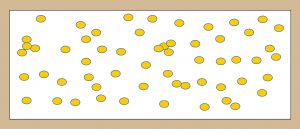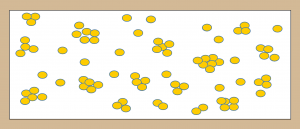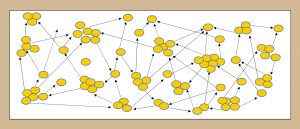How the Oval Mapping Technique is used to Obtain Strategic Information
The Oval Mapping Technique is normally referred to as ‘OMT’. It is a highly participative method that is used to quickly generate, capture and structure a large amount of information.
Oval mapping is used in workshops to help surface ideas, opinions, issues, options, goals, etc. about the topic being considered. In a strategy workshop we may ask the participants to work on a question like “where do we want the organisation to be in 5 years, how will we get there and wat might get in the way?”.
It allows people to gain an insight into the views of others. This helps increase their understanding of the strategic issues and possible solutions. When used in strategy creation, it leads to the creation of a shared vision of the future of the organisation. Importantly, it also helps to build consensus about the way forward.
As a result, OMT has been used extensively in organisations of all types and sizes to rapidly create the basic structure of their strategy model.
Implementing Oval Mapping
Before running an OMT workshop, it is important to ensure that the room is set up correctly. The most important aspect of this is the seating positions of the individuals involved.
 As shown in the diagram, the participants are be seated in a semi-circle facing a wall that is covered in paper, which is where their ideas, issues and options will be posed.
As shown in the diagram, the participants are be seated in a semi-circle facing a wall that is covered in paper, which is where their ideas, issues and options will be posed.
This set up encourages them to focus on what is in front of them which reduces the potential for any peer pressure in the process. It is in this way that we create a ‘safe’ environment where they feel comfortable in contributing to the process.
It is also important to understand the people who are involved in the process. Obtaining a pen portrait of each participant can help ensure that the facilitator understands the personalities of the people involved. It will, therefore, know who may need to be encouraged to participate, who may be too vocal, who may be disruptive, etc. This information will help ensure that the workshop is productive and will increase the likelihood of obtaining good strategic information.
OMT Workshops are made up of three phases:
In the first phase, the participants are asked to write their thoughts about the question being asked onto sticky ovals (hence the name). These ovals are then stuck onto the paper covered wall in front of them. We facilitate this process, ensuring that ‘rules’ are followed and encouraging people to record as many thoughts as possible. The diagram shows how this may look during this first phase.
Once everyone has finished posting their ideas, we work with them to group the material into related clusters or groups. This helps to clarify the statements that people have posted by putting them alongside similar statements. It will also raise questions about statements whose meaning is not clear. This helps the group to understand the content and context of each statement. It starts the process of helping the participants to explore each others views. More importantly, it starts the process of bringing the ideas of the participants together.
The final and most critical part of the process is mapping. Here, all of the individual statements are linked the together using cause-and-effect arrows. This effectively links the views of all participants. This helps them to learn from one another and understand the interaction of their ideas, opinions and issues. It also enables participants from different parts of the organisation to begin to experience the difficulties and skills of their colleagues. This starts the process of building consensus around the future direction of the organisation.
Through this ability to learn and appreciate each other’s point of view, participants will be more likely to work together as a team. They will also be more committed to implementing agreed strategies and action plans. This can have a significant impact on creating strategic change and attaining the business objectives and goals.






